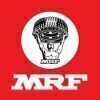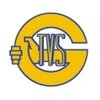Filter interviews by
Tenneco Group Leader Interview Questions and Answers
Tenneco Group Leader Interview Experiences
1 interview found
I applied via Naukri.com and was interviewed in Jul 2024. There was 1 interview round.
(5 Questions)
- Q1. Welding symbols,types of welding ,defect
- Q2. Fmea,Tpm,8d,lean manufacturing
- Q3. Just in time supplies
- Q4. Takt time calculation study
- Q5. Total lead time
Interview questions from similar companies

I applied via Referral and was interviewed before Sep 2020. There were 3 interview rounds.
Interview Questionnaire
7 Questions
- Q1. 1.Tell me something about yourself
- Q2. Computer shortcut keys
- Q3. What is unit of current?
- Ans.
The unit of current is Ampere (A).
The unit of current is a measure of the flow of electric charge.
It represents the rate at which electric charges pass through a given point in a circuit.
Current is measured using an ammeter.
The SI unit for current is Ampere (A).
- Q4. How much electricity is available in the house?
- Ans.
The question is not relevant to the job position of Process Engineer.
The question is not related to the job responsibilities of a Process Engineer.
The amount of electricity available in a house is not relevant to the job.
The question may be better suited for an electrician or energy specialist.
- Q5. What is your acceptance for this company?
- Q6. He is Allways asked your workability
- Q7. Some questions are asked your resume
Interview Preparation Tips

I applied via Recruitment Consultant and was interviewed in Dec 2020. There was 1 interview round.
Interview Questionnaire
2 Questions
- Q1. What is productivity in business
- Ans.
Productivity in business refers to the efficiency and effectiveness of the production process.
Productivity is the measure of output per unit of input.
It is important for businesses to maximize productivity to increase profits and remain competitive.
Factors that can affect productivity include technology, employee training, and management practices.
Examples of productivity measures include units produced per hour, reven...
- Q2. How you handling manpower
Interview Preparation Tips

I applied via Walk-in and was interviewed before Oct 2021. There were 2 interview rounds.

(2 Questions)
- Q1. Basic ectronic related questions Family background Current transformer Potential transformer
- Q2. Basic fundamentals Working principle of Induction motor
- Ans.
Induction motor works on the principle of electromagnetic induction to convert electrical energy into mechanical energy.
Induction motor has a stator and a rotor
Stator has a set of coils that are supplied with AC current
This creates a rotating magnetic field which induces current in the rotor
The rotor then starts rotating due to interaction with the magnetic field
Induction motor is widely used in industries for various
Interview Preparation Tips
- Electrical related
- Siemens PLC
- Programming
Job interview person is a best advisor and suggest

I applied via Naukri.com and was interviewed in Feb 2021. There were 3 interview rounds.
Interview Questionnaire
1 Question
- Q1. Printer machine issues. pick and place errors
Interview Preparation Tips

Production Engineer Interview Questions & Answers
Sansera Engineeringposted on 1 Aug 2020
I applied via Recruitment Consultant
Interview Questionnaire
3 Questions
- Q1. Basic knowledge about qualification
- Q2. Experience related questions
- Q3. Some technical question s
Interview Preparation Tips

Diploma Trainee Engineer Interview Questions & Answers
Sansera Engineeringposted on 27 Mar 2021
Interview Questionnaire
1 Question
- Q1. My favourite subject in my 3 year Mechanical Diploma. And my family background.

I applied via Campus Placement and was interviewed before Nov 2020. There were 5 interview rounds.
Interview Questionnaire
11 Questions
- Q1. Write the P-V diagram of Double stage air compressor
- Ans.
A P-V diagram of a double stage air compressor shows the pressure-volume relationship during compression.
The diagram consists of two stages of compression.
The first stage compresses the air from atmospheric pressure to an intermediate pressure.
The second stage compresses the air from the intermediate pressure to the final pressure.
The volume decreases as the pressure increases during compression.
The diagram can be used...
- Q2. What is a strain gauge
- Ans.
A strain gauge is a device used to measure strain or deformation in an object.
It consists of a thin wire or foil that is attached to the object being measured.
As the object deforms, the wire or foil also deforms, causing a change in its electrical resistance.
This change in resistance is measured and used to calculate the amount of strain or deformation in the object.
Strain gauges are commonly used in engineering and ma...
- Q3. What are different types of bearings
- Ans.
Bearings are used to reduce friction between two moving parts. There are different types of bearings.
Plain bearings
Rolling element bearings
Jewel bearings
Fluid bearings
Magnetic bearings
- Q4. What are different types of gears
- Ans.
Different types of gears include spur gears, helical gears, bevel gears, worm gears, and rack and pinion gears.
Spur gears have straight teeth and are the simplest and most common type of gear.
Helical gears have angled teeth and provide smoother and quieter operation compared to spur gears.
Bevel gears have cone-shaped teeth and are used to transmit power between intersecting shafts.
Worm gears consist of a worm and a wor...
- Q5. What is your favorite subject
- Q6. How do we select pumps
- Ans.
Pumps are selected based on the required flow rate, head, and fluid properties.
Determine the required flow rate and head for the application
Consider the fluid properties such as viscosity, temperature, and corrosiveness
Select a pump type that is suitable for the application, such as centrifugal, positive displacement, or axial flow
Choose a pump material that is compatible with the fluid being pumped
Consider the operati...
- Q7. What are different types of boilers
- Ans.
Boilers are classified based on their design, fuel type, and application.
Fire-tube boilers
Water-tube boilers
Electric boilers
Gas boilers
Oil boilers
Solid fuel boilers
Combination boilers
Condensing boilers
Industrial boilers
Residential boilers
- Q8. What are different types of threads
- Ans.
Threads are helical ridges or grooves on the surface of a cylindrical object. There are different types of threads.
Unified Thread Standard (UTS)
Metric Thread Standard
Pipe Thread Standard
ACME Thread
Buttress Thread
Knuckle Thread
Square Thread
Round Thread
- Q9. What are different types of valves
- Ans.
Valves are devices used to control the flow of fluids or gases. There are several types of valves used in different applications.
Gate valve
Ball valve
Butterfly valve
Globe valve
Check valve
Diaphragm valve
Needle valve
Pressure relief valve
Safety valve
- Q10. What is a DCV in Hydraulics
- Ans.
DCV stands for Directional Control Valve in hydraulics which controls the direction of fluid flow.
DCV is used to control the direction of fluid flow in hydraulic systems.
It is a type of valve that directs the flow of fluid to different parts of the system.
DCV can be manually operated or automated depending on the application.
Examples of DCV include spool valves, poppet valves, and rotary valves.
DCV is an important comp...
- Q11. Explain your final year project
Interview Preparation Tips
Skills evaluated in this interview

I applied via Recruitment Consultant and was interviewed in Apr 2021. There was 1 interview round.
Interview Questionnaire
3 Questions
- Q1. What is the pressure
- Ans.
Pressure is the force exerted on a surface per unit area.
Pressure is a measure of how much force is applied to a given area.
It is calculated by dividing the force applied by the area over which it is distributed.
Pressure can be expressed in various units such as pascals, pounds per square inch (psi), or atmospheres.
Examples of pressure include the air pressure in a tire, the water pressure in a pipe, or the blood press
- Q2. What is the strain
- Ans.
Strain is the measure of deformation or elongation of a material under stress.
Strain is a ratio of change in length to the original length of a material.
It is measured in units of percentage or in terms of length per unit length.
Strain can be either tensile (stretching) or compressive (shrinking).
- Q3. What is the force
- Ans.
Force is a physical quantity that describes the interaction between two objects.
Force is measured in Newtons (N)
It can be calculated using the formula F = m x a (force = mass x acceleration)
There are different types of forces such as gravitational, electromagnetic, and frictional forces
Force can cause an object to accelerate, change direction, or deform
Interview Preparation Tips

Diploma Trainee Engineer Interview Questions & Answers
Hitachi Astemoposted on 23 Mar 2021
I applied via Company Website and was interviewed in Sep 2020. There were 3 interview rounds.
Interview Questionnaire
2 Questions
- Q1. Say about yourself
- Q2. What is important for your life qualification ya skill
Interview Preparation Tips
Tenneco Interview FAQs
Tell us how to improve this page.
Tenneco Interviews By Designations
- Tenneco Diploma Trainee Engineer Interview Questions
- Tenneco Maintenance Engineer Interview Questions
- Tenneco Store Executive Interview Questions
- Tenneco Supplier Development Engineer Interview Questions
- Tenneco Process Engineer Interview Questions
- Tenneco Graduate Engineer Trainee (Get) Interview Questions
- Tenneco Production Engineer Interview Questions
- Tenneco Team Lead Interview Questions
- Show more
Interview Questions for Popular Designations
- Group Manager Interview Questions
- Sales Team Leader Interview Questions
- Senior Group Leader Interview Questions
- Senior Team Leader Interview Questions
- Team Leader (Technical) Interview Questions
- Line Leader Interview Questions
- Process Leader Interview Questions
- Senior Leader Engineer Interview Questions
- Show more
Tenneco Group Leader Interview Process
based on 1 interview
Interview experience
Interview Questions from Similar Companies
Fast track your campus placements
Tenneco Group Leader Reviews and Ratings
based on 8 reviews
Rating in categories
|
Production Engineer
185
salaries
| ₹1 L/yr - ₹6.9 L/yr |
|
Quality Engineer
157
salaries
| ₹1.2 L/yr - ₹4.6 L/yr |
|
Quality Inspector
138
salaries
| ₹1 L/yr - ₹2.9 L/yr |
|
Diploma Trainee Engineer
127
salaries
| ₹1.1 L/yr - ₹2.7 L/yr |
|
Associate Engineer
122
salaries
| ₹1.9 L/yr - ₹6.3 L/yr |

Bosch

Samvardhana Motherson Group

MRF Tyres

Yazaki
- Home >
- Interviews >
- Tenneco Interview Questions >
- Tenneco Group Leader Interview Questions



















